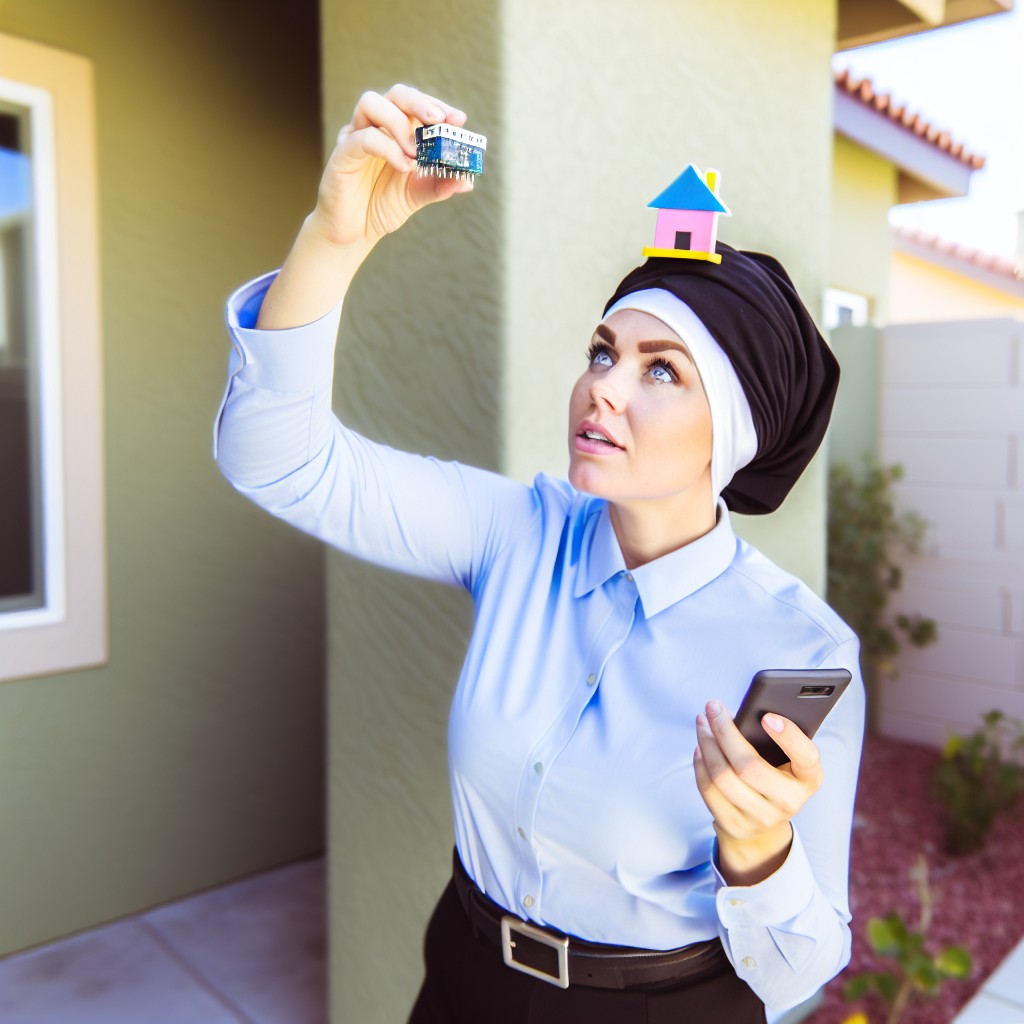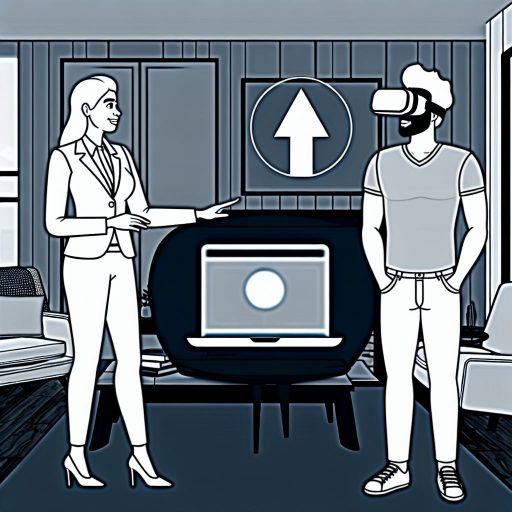Introduction to IoT Sensors in Real Estate
The Role of IoT Sensors in Modern Property Management
IoT sensors revolutionize how property inspections occur in real estate.
They provide continuous, real-time data about building conditions.
Property managers and inspectors use these devices to monitor safety and efficiency.
Consequently, IoT sensors reduce manual inspection needs and human error.
Smart property inspections enhance maintenance scheduling and prevent costly damages.
Types of IoT Sensors Used in Smart Property Inspections
Various IoT sensors target specific aspects of property health.
Temperature and humidity sensors track environmental changes inside buildings.
Motion and occupancy sensors detect unauthorized access and optimize energy usage.
Leak sensors alert property owners about potential water damage early.
Structural sensors measure vibrations and stress on critical building components.
Benefits of Implementing IoT Sensors in Real Estate Inspections
IoT sensors deliver accurate, timely information that supports better decisions.
They improve safety by identifying hazards before they escalate.
Furthermore, these devices help reduce operational costs through smarter resource management.
Property owners gain greater transparency over maintenance activities and asset conditions.
Additionally, IoT-enhanced inspections increase tenant satisfaction by maintaining safe environments.
Considerations for Effective IoT Sensor Adoption
Integrating IoT sensors requires careful planning and technical expertise.
Data security remains a critical concern for connected property systems.
Maintenance of the sensor network is essential to ensure long-term reliability.
Despite challenges, progressive firms like Nexus Asset Management successfully implement these technologies.
Therefore, the future of real estate inspections clearly leans toward smart, sensor-driven approaches.
Types of IoT Sensors Used in Property Inspections
Environmental Sensors
Environmental sensors monitor temperature, humidity, and air quality inside properties.
They help detect mold risks by measuring moisture levels precisely.
Additionally, these sensors alert inspectors to unsafe indoor air conditions.
For example, Climatiq Systems uses advanced humidity sensors in building assessments.
Structural Integrity Sensors
Structural sensors monitor vibrations, cracks, and material stress on buildings.
These sensors enable early detection of potential faults or weaknesses.
Furthermore, structural health monitoring helps prioritize urgent repairs effectively.
IntegrityCheck Consulting uses vibration sensors to ensure building stability over time.
Motion and Occupancy Sensors
Motion sensors track movement inside and around properties to assess occupancy.
They support security inspections by identifying unauthorized access patterns.
Moreover, these sensors facilitate smart lighting and energy management.
SecureSight Solutions specializes in deploying occupancy sensors for site checks.
Water Leak and Flood Sensors
Water leak sensors detect the presence of unwanted moisture or flooding promptly.
They reduce water damage risks by enabling quick response to leaks.
Many inspection firms integrate these sensors to improve safety protocols.
For instance, AquaSafe installs flood sensors in basements and critical areas.
Gas and Chemical Sensors
Gas sensors identify hazardous substances like carbon monoxide and natural gas leaks.
These sensors protect occupants by triggering timely alerts during inspections.
They also assist in verifying compliance with safety standards.
ClearAir Technologies employs multi-gas detectors for thorough evaluations.
Thermal Imaging Sensors
Thermal sensors capture heat signatures to locate insulation gaps or electrical faults.
They provide non-invasive inspection techniques that improve accuracy.
In addition, thermal imaging assists in identifying HVAC system inefficiencies.
InfraRed Vision offers cutting-edge thermal sensors tailored for inspection needs.
Benefits of Using IoT Sensors for Smart Property Inspections
Enhanced Accuracy and Real-Time Monitoring
IoT sensors deliver precise and continuous data during property inspections.
This technology eliminates human errors often found in manual inspections.
Moreover, smart sensors provide real-time updates on property conditions.
Consequently, inspection teams can respond promptly to emerging issues.
Cost Efficiency and Resource Optimization
Using IoT sensors reduces the need for frequent manual inspections.
This approach lowers labor costs and minimizes inspection-related expenses.
Additionally, property managers can allocate resources more effectively.
As a result, smart inspections optimize maintenance scheduling and budgeting.
Increased Safety for Inspectors and Occupants
IoT sensors allow remote property assessments, decreasing the need for physical presence.
This reduces inspectors’ exposure to hazardous environments.
Furthermore, occupants benefit from timely detection of risks like gas leaks or mold.
Therefore, smart inspections enhance overall safety standards within properties.
Comprehensive Data Collection and Analysis
IoT devices gather diverse data types such as temperature, humidity, and structural stress.
This data supports comprehensive analysis and better-informed decision-making.
Cloud platforms enable long-term storage and trend analysis of property conditions.
Ultimately, this leads to proactive maintenance and improved asset management.
Scalability and Integration with Other Technologies
IoT sensor networks scale easily to cover large or multiple property sites.
The data integrates seamlessly with building management systems and AI tools.
This integration enables automated alerts and predictive maintenance workflows.
Consequently, companies like Horizon Property Solutions enhance inspection efficiency using IoT solutions.
See Related Content: Google Ads for Real Estate Agents to Generate High-Intent Buyer Leads
How IoT Sensors Enhance Property Condition Monitoring
Real-Time Data Collection
IoT sensors gather property data continuously and in real time.
This constant data stream enables property managers to monitor conditions remotely.
Moreover, immediate alerts notify teams of unusual changes or potential issues.
Consequently, early detection helps prevent costly damages and disruptions.
Improved Accuracy and Reliability
IoT sensors detect environmental changes with high precision.
They eliminate errors caused by manual inspections or delayed reporting.
Therefore, sensor data provides an accurate representation of property health.
This reliability supports better decision-making about maintenance priorities.
Automation of Routine Inspections
IoT devices automate inspection tasks that traditionally required physical presence.
Remote monitoring reduces the need for frequent on-site visits.
As a result, facility managers save time and operational costs.
Additionally, automation increases inspection frequency without increased labor.
Comprehensive Environmental Monitoring
Different sensors track temperature, humidity, air quality, and structural motion.
These combined metrics offer a holistic view of a property’s condition.
Thus, property teams can spot patterns and anticipate long-term wear.
For example, detecting moisture buildup early prevents mold and structural decay.
Enhanced Maintenance Planning
Detailed insights from IoT sensors enable proactive maintenance schedules.
Property managers can allocate resources efficiently and avoid emergency repairs.
Furthermore, historical data trends help forecast future maintenance needs.
This strategic approach extends the lifespan of building components and systems.
Increased Tenant Satisfaction and Safety
Maintaining optimal property conditions improves occupant comfort and safety.
For instance, sensors can detect fire hazards and gas leaks promptly.
Swift responses reduce risks and enhance tenant trust in the property manager.
Ultimately, smart monitoring contributes to higher tenant retention rates.
Discover More: AI-Powered Real Estate Valuation and Property Pricing
Challenges and Limitations of IoT Sensors in Property Management
Technical and Connectivity Issues
IoT sensors rely heavily on stable internet connectivity for real-time data transmission.
Many properties face inconsistent network coverage, causing frequent data loss.
Signal interference from building materials can weaken sensor communication.
These issues lead to incomplete or delayed information during property inspections.
Firmware bugs or hardware malfunctions in sensors disrupt accurate monitoring.
Property managers must invest in robust network infrastructure for reliable sensor performance.
Security and Privacy Concerns
IoT devices collect vast amounts of sensitive data about properties and occupants.
Hackers can exploit security vulnerabilities to access or manipulate this information.
Inadequate encryption and weak authentication expose systems to cyber attacks.
Such breaches threaten tenant privacy and jeopardize property safety.
Implementing stringent cybersecurity protocols is essential for data protection.
Costs and Maintenance Requirements
Deploying IoT sensors demands significant upfront investment in hardware and setup.
Continuous maintenance is required to ensure sensors operate correctly over time.
Regular calibration and battery replacements add to ongoing operational expenses.
These financial commitments can discourage small property management firms from adopting IoT.
Balancing costs with long-term benefits remains a vital consideration.
Limitations in Data Accuracy and Interpretation
IoT sensors sometimes produce inaccurate or noisy data due to environmental factors.
Temperature sensors might be affected by direct sunlight or drafts.
False alarms or missed issues may occur during inspections.
Complex data requires skilled analysis to extract actionable insights.
Without expert interpretation, sensor data may not translate into effective decision-making.
Integration Challenges with Existing Systems
Many properties use legacy management software that lacks IoT compatibility.
This incompatibility complicates seamless data sharing between devices and platforms.
Integrating diverse sensor brands and protocols creates interoperability issues.
Property managers face difficulties in unifying monitoring systems efficiently.
Selecting IoT solutions with open standards and scalable integration is crucial.
Uncover the Details: Online Real Estate Platforms for Commercial Properties

Case Studies of Successful Implementation of IoT Sensors in Inspections
Greenfield Property Management Enhances Efficiency
Greenfield Property Management integrated IoT sensors into their routine inspections.
The company deployed temperature and humidity sensors in over fifty commercial buildings.
Consequently, maintenance teams received real-time alerts about potential HVAC failures.
This proactive approach reduced emergency repair costs by 35% within six months.
Furthermore, the firm improved tenant satisfaction through faster issue resolution.
Summit Real Estate Utilizes Vibration Sensors for Structural Monitoring
Summit Real Estate adopted vibration sensors to assess structural integrity in historic properties.
The sensors continuously monitored building vibrations caused by nearby construction work.
As a result, the inspection team detected early signs of stress and damage.
Thus, Summit Real Estate prevented costly structural failures.
Moreover, they enhanced safety for tenants and preserved property value.
BlueSky Residential Leverages IoT for Water Leak Detection
BlueSky Residential installed IoT water sensors across their apartment complexes.
The sensors instantly detect leaks and alert the maintenance crew.
Immediately, technicians respond before significant water damage occurs.
This rapid action reduced water-related repair expenses by over 40%.
In addition, BlueSky Residential increased residents’ trust in property management.
Evergreen Facilities Uses Multi-Sensor Systems to Improve Inspections
Evergreen Facilities incorporated multi-sensor IoT devices collecting environmental and structural data.
These devices include air quality, temperature, humidity, and motion sensors.
Consequently, the inspection process became more comprehensive and accurate.
Maintenance schedules adjusted dynamically based on data insights.
Eventually, Evergreen Facilities optimized resources and improved overall building performance.
Parkview Commercial Trust Transforms Inspection Reporting
Parkview Commercial Trust adopted IoT sensors with cloud integration for inspection reporting.
Data collected from sensors automatically fed into their digital inspection platform.
This innovation eliminated manual data entry and reduced human errors significantly.
Furthermore, stakeholders accessed real-time inspection data and analytics.
Therefore, decision-making became faster and more informed across the organization.
Gain More Insights: IoT Home Automation for Real Estate Investors
Future Trends in IoT Sensor Technology for Real Estate
Advancements in Sensor Accuracy and Precision
IoT sensors continue to improve in accuracy and precision.
Engineers at NexaSense Technologies recently achieved key breakthroughs in sensor calibration.
This advancement ensures more reliable data collection during property inspections.
Inspectors can thus identify potential issues sooner with greater confidence.
Enhanced accuracy also reduces false alarms and unnecessary maintenance.
Integration of Artificial Intelligence and Machine Learning
Industry leaders like TerraSmart Analytics integrate AI with IoT sensors.
This combination enables real-time data analysis and predictive maintenance.
Property managers receive proactive alerts about equipment failures or structural risks.
Machine learning models adapt continuously to changing environmental conditions.
Inspection reports become increasingly insightful and easier to interpret.
Energy-Efficient and Sustainable Sensor Designs
EcoSense Innovations focuses on developing sensors with low power consumption.
These devices extend battery life and minimize environmental impact.
Property owners benefit from longer-lasting sensor deployments.
Sustainable materials are increasingly used in sensor manufacturing.
This trend supports green building initiatives and regulatory compliance.
Wireless Connectivity and Edge Computing
Wireless protocols such as 5G and LoRaWAN enhance sensor communication.
Data processing now happens locally using edge computing technologies.
This approach reduces latency and improves response times during inspections.
It also ensures continuous data flow in connectivity-challenged environments.
Companies like Vertex IoT Solutions lead innovation in this area.
Expansion of Multi-Modal Sensors
Multi-modal sensors combine several sensing capabilities into a single device.
They can monitor temperature, humidity, motion, and air quality simultaneously.
This integration simplifies installation and data management.
Inspectors gain a holistic view of a property’s condition as a result.
Startups like Synapse Smart Sensors are pioneering this technology worldwide.
Enhanced Security and Data Privacy
Real estate technology companies emphasize protecting sensor data rigorously.
Advanced encryption standards secure communication channels effectively.
Compliance with regulations like GDPR builds user trust.
Innovators such as GuardianTech implement blockchain for tamper-proof records.
Data integrity and privacy become central to smart inspection solutions.
Customization and Scalability of IoT Solutions
Companies offer tailored sensor packages suited for various property types.
Urban high-rises and rural estates have different monitoring requirements.
Modular designs simplify scaling of sensor networks as properties evolve.
Clients appreciate flexibility in deployment and cost optimization.
Firms like OptiSense Systems provide such adaptive IoT platforms.
Collaborative Ecosystems for Smarter Properties
Cross-industry partnerships accelerate innovation in IoT sensor technology.
Real estate developers, tech providers, and insurers collaborate closely.
This cooperation drives adoption of integrated inspection services.
Ultimately, it enhances asset management and reduces operational risks.
The alliance between Meridian Properties and Vantage Sensor Networks shows this synergy.
Best Practices for Integrating IoT Sensors in Property Inspections
Planning and Preparation for Sensor Deployment
Begin by assessing the specific needs of the property inspection project.
Consult with experienced engineers like Marcus Ellison from Apex Inspection Services.
Determine which environmental factors require monitoring such as moisture or temperature.
Choose sensor types that best fit these monitoring needs for accuracy and reliability.
Collaborate closely with vendors like Nimbus Tech Solutions to ensure compatibility.
Establish a detailed deployment plan that outlines sensor placement and data collection intervals.
Additionally consider the property’s layout and access points for optimal sensor coverage.
Ensuring Robust Connectivity and Data Management
Reliable wireless networks are crucial to the success of IoT sensor integration.
Work with network specialists such as Elena Vargas from Sterling Wireless to optimize connectivity.
Implement backup communication methods to prevent data loss during outages.
Secure data storage solutions should comply with industry standards and client requirements.
Use platforms like Sentinel Data Systems to process sensor data in real time.
Regularly audit data streams to identify irregularities and maintain integrity.
Maintaining Sensor Performance and Accuracy
Schedule routine maintenance to ensure sensors operate effectively during inspections.
Train technicians like Rafael Ortiz on sensor calibration procedures and troubleshooting.
Use protective housing for sensors located in harsh environmental conditions.
Monitor battery levels and replace power sources proactively to avoid downtime.
Leverage remote diagnostic tools offered by companies such as Lintek Solutions.
Document all maintenance activities meticulously for regulatory and quality assurance.
Integrating IoT Data with Inspection Workflow
Incorporate sensor data seamlessly into existing inspection management systems.
Provide inspectors such as Leah Kim with mobile apps for real-time data access on site.
Utilize visualization tools to generate actionable insights and highlight anomalies.
Encourage collaboration between property managers and inspection teams using shared dashboards.
Continuously refine data analysis protocols to improve inspection accuracy and efficiency.
Addressing Security and Privacy Concerns
Prioritize cybersecurity throughout the IoT sensor integration process.
Implement encryption standards endorsed by CyberSafe Consulting led by Amir Patel.
Establish strict access controls to restrict data visibility to authorized personnel only.
Conduct regular security audits to detect and mitigate vulnerabilities promptly.
Educate all stakeholders about best practices for protecting sensitive inspection data.
Training and Support for Field Teams
Develop comprehensive training programs for field operatives like the ClearView Inspection Crew.
Emphasize hands-on experience with sensor installation calibration and data interpretation.
Provide ongoing technical support through HelpTech Services to resolve issues quickly.
Gather feedback from users to enhance training materials and sensor usability.
Promote a culture of continuous learning and technology adoption within inspection teams.
Additional Resources
Real Estate Innovations Overview
Maximizing Efficiency: The Role of AI in Vacant Property Maintenance




